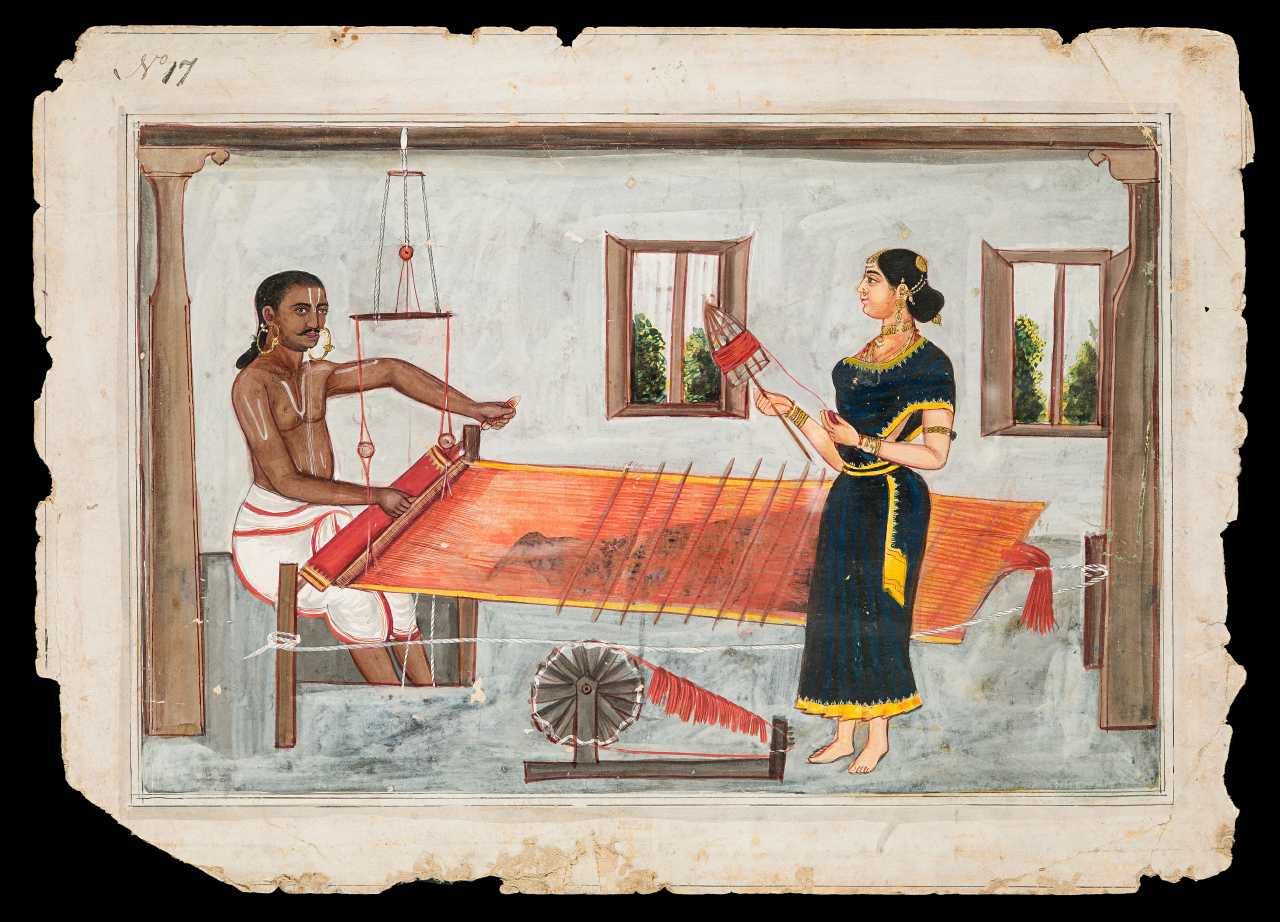
An Indian weaver and his wife
This Indian miniature painting is made in “company painting” style which developed in the eighteenth century. During the Danish era in Tranquebar weaving was mostly a home industry. Textile was exported from the Indian Coromandel Coast to Europe and not least to the islands of South East Asia in exchange for coveted spices, for example cardamom and nutmeg. From the hand of Jon Olafsson who served as soldier at Fort Danborg in Tranquebar in 1624, we have a description of how, after weaving some of the finer textiles, the Indian “pentadors” (painters) took over and he explained how they are skillful in every kind of “painting and dyeing their cotton cloth with every kind of colour, for which purpose they have long houses without walls, within which are tables as long as the houses, and on them they have their pots of all colours and their brushes or pens, with which they mark and draw on all the cotton cloth and silk which they intend to dye. Their brushes are made of hogs' bristles, and are both large and small; and with these they have great skill and artistry in making all kinds of pictures on the cloth. They sit there all day until the evening (except just at midday, when they go indoors for their dinner), working with great art and with a gleeful chatter. I used often to sit at the tables in their dyeing houses and they used to give me a kindly welcome. And when each piece of cloth is finished, it is forthwith spread out in the sun on flat ground, and pegged out to dry”. Citation from Temple, Richard & Lavinia M. Anstey, (eds.): Life of the Icelander Jon Olafsson, Traveller to India. Vol. II, GBR: Hakluyt Society, 2010, p. 138, 142.